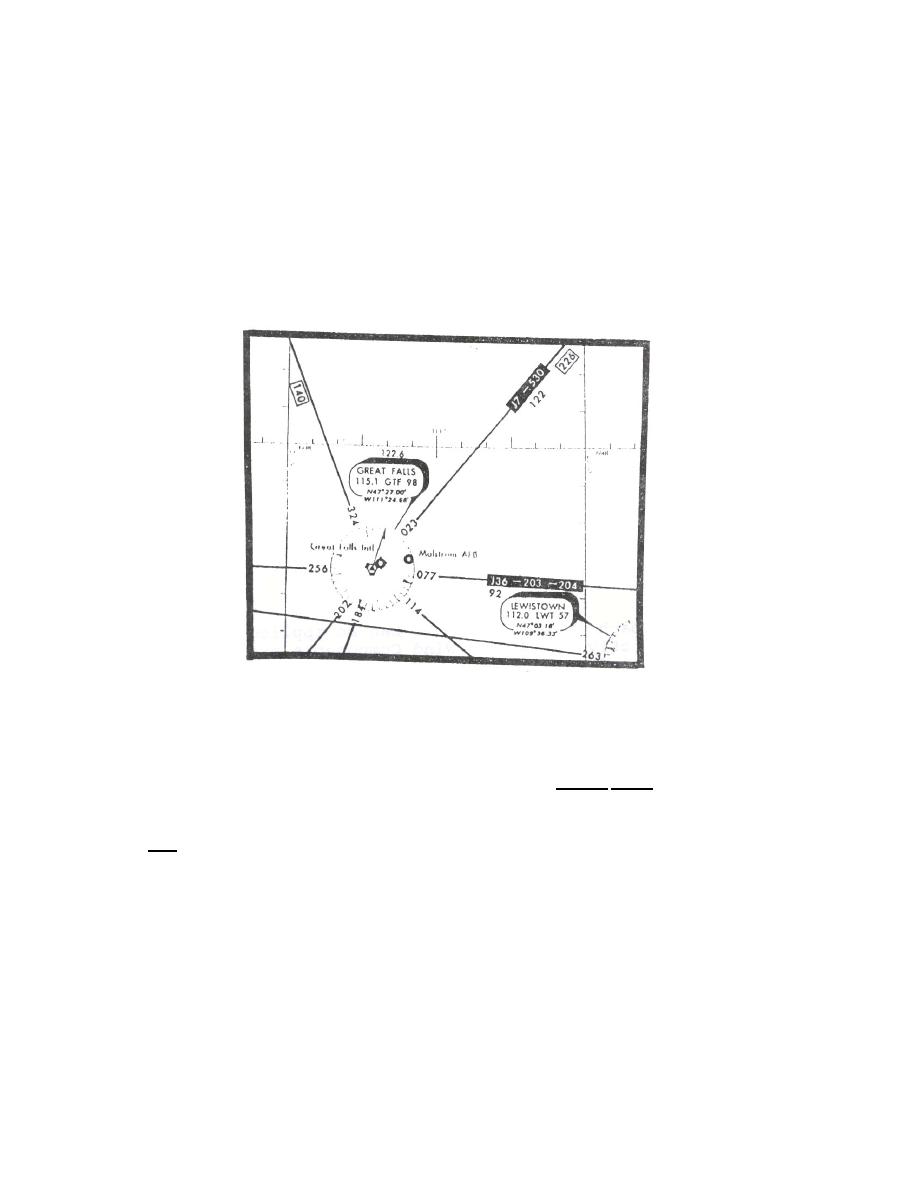 |
|||
|
|
|||
|
|
|||
| ||||||||||
|
|  INSTRUMENT NAVIGATION
Wind solutions may sometimes be difficult, however the direction and velocity will be
helpful. The wind itself is never constant in either direction or velocity; therefore, pinpoint
accuracy is never possible.
In addition to applying the wind to your enroute navigation, it will affect turn radius. In
Figure 38, if you were proceeding west on J-36 and intended to join J-7 at Great Falls, you would
have to intercept an outbound course of 023.
If you turn to a heading of 023 on top GTF, you will probably parallel the left side of J-7
because your aircraft's turn radius would be too wide to intercept the 023R.
Figure 38
A tailwind in the previous situation would tend to increase the displacement between aircraft
position and desired track; whereas, a headwind could negate some of the effects of the turn
radius. Recall that the formula for leading turns is of 1% of ground speed.
Once you know the wind, much of the guess war}: will be taken out of course control. The
wind will affect you in flight. t may cause you to drift left or right or it may slow you down or
speed you up. By applying the procedures you have learned in this chapter you will be able to
compensate for it and you will be in control.
RADIAL TRACKING AND COURSE CONTROL 3-29
|
|
Privacy Statement - Press Release - Copyright Information. - Contact Us |